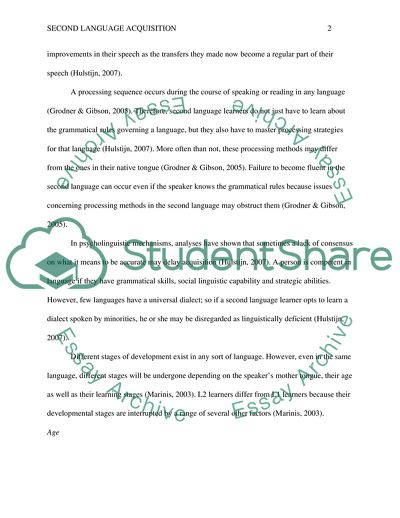Cite this document
(Why Second Language Acquisition Is Fundamentally Different from First Essay Example | Topics and Well Written Essays - 1250 words, n.d.)
Why Second Language Acquisition Is Fundamentally Different from First Essay Example | Topics and Well Written Essays - 1250 words. https://studentshare.org/education/1829559-why-second-language-acquisition-is-fundamentally-different-from-first-language-acquisition
Why Second Language Acquisition Is Fundamentally Different from First Essay Example | Topics and Well Written Essays - 1250 words. https://studentshare.org/education/1829559-why-second-language-acquisition-is-fundamentally-different-from-first-language-acquisition
(Why Second Language Acquisition Is Fundamentally Different from First Essay Example | Topics and Well Written Essays - 1250 Words)
Why Second Language Acquisition Is Fundamentally Different from First Essay Example | Topics and Well Written Essays - 1250 Words. https://studentshare.org/education/1829559-why-second-language-acquisition-is-fundamentally-different-from-first-language-acquisition.
Why Second Language Acquisition Is Fundamentally Different from First Essay Example | Topics and Well Written Essays - 1250 Words. https://studentshare.org/education/1829559-why-second-language-acquisition-is-fundamentally-different-from-first-language-acquisition.
“Why Second Language Acquisition Is Fundamentally Different from First Essay Example | Topics and Well Written Essays - 1250 Words”. https://studentshare.org/education/1829559-why-second-language-acquisition-is-fundamentally-different-from-first-language-acquisition.


